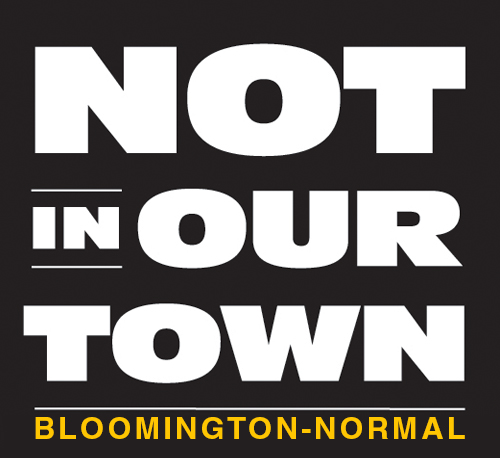Kevin Barlow
The Pantagraph
Josh Lewis, an 11-year-old Bloomington Junior High School student, says he used to like police officers, participating in “Ice Cream with a Cop” events and talking to officers at school sporting events and activities.
But that all changed a few months back, he told a crowd of about 300 people at a public meeting Thursday at Mount Pisgah Baptist Church with Bloomington Police officials and hosted by Black Lives Matter Bloomington-Normal.
“One day, my ride picked me up and was confused when we got pulled over a couple of blocks from my house,” he said. “There was no way we had broken any traffic laws.
"The driver was worried about getting a ticket because he had left his wallet with his license at home," he said. "But the officer didn’t want to talk with him. He wanted to talk with me.
"I was nervous. I had heard about black people getting shot by police.”
Lewis said the officer informed him he was investigating a car theft in the area. The driver, according to Lewis, asked if he was going to get a ticket for driving without his license and was told that he wouldn’t.
“I was confused by this,” Lewis said. “I was relieved when he left.
"Then I got pissed when I realized what happened. Was the officer thinking I stole the car or knew something about it? I don’t even drive. But this was profiling. The driver was white and (the officer) didn’t say anything to him.”
Lewis was one of several members of the Black Lives Matter group who spoke at the meeting, detailing incidents where they felt they were unjustly treated by police because of their race.
Group member Ky Ajayi moderated the program.
“There is a lot of misunderstanding of who we are and what we stand for, and even though we are only 2 months old, we are already controversial,” he said. “There are folks out there who don’t know us, don’t like us and have decided they can’t work with us because we say ‘Black lives matter.’"
"Saying that shouldn’t be controversial. We should all be saying ‘Black lives matter’ because when we say that, we are lifting up a problem," he said.
"When people say ‘Save the whales,’ they aren’t advocating the destruction of all other sea life. A problem has been identified and a call to action is being sent.”
Bloomington Police Chief Brendan Heffner was allowed to make opening remarks for about five minutes. He was not permitted to comment on the stories that were told, but he was allowed to answer only "yes" or "no" to prepared questions asked by Ajayi.
“There are two sides to every story,” Heffner said after the meeting. “Obviously, tonight, I had no chance to respond and this was not a meeting for dialogue. But I heard it and if those things occurred, that’s not good, but I need information.”
Several issues were discussed, including the use of cameras in undisclosed, public areas of largely minority neighborhoods; the use of body cameras on officers; police training and oversight; and policies related to community police and "broken windows policing" (questioning anyone in the area when a crime is suspected).
Also discussed was a proposal to use a vacant but rehabilitated house owned Mid Central Community Action at 828 W. Jefferson St. for a police substation, which has drawn criticism from among west-side residents.
Under the plan up for a City Council vote next month, officers from every patrol shift could stop by the house to fill out reports, eat meals, take breaks and be out and about in the neighborhood.
“Personally, I am anti-police substation in my neighborhood,” said west-side resident Sonny Garcia. “Think about being in an abusive relationship: You get separated and then the abuser want to come back in.
"Until there is more training for police on race issues and a level of trust is established, I don’t think the substation is a good idea,” he said.


















